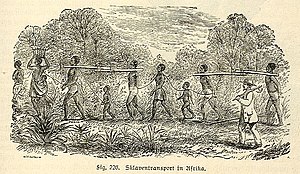Hacienda Esperanza - A history of sugar and slavery
 |
| Main House at Hacienda Esperanza |
Puerto Rico, like almost all of the countries of the
Americas, has a long and troubled history in dealing with its enslaved people
and racism. As a Spanish colony, its sugar and coffee industries were founded on
the backs of enslaved African captives. Slavery was abolished in Puerto Rico
1873, but it did not actually end until 1876. For Almost one hundred years
slavery was kind of a hidden fact. Everyone knew it had existed, but official
Puerto Rico didn’t talk about it. It wasn’t until the latter half of the 20th
Century that historians on the island began to study and discuss the role of
enslaved Tainos and Africans in developing the economy of Puerto Rico.
Today Para la Naturaleza, a non-profit
organization dedicated to the conservation of natural resources in Puerto Rico
is at the forefront of the preservation and presentation of the history of
coffee and sugar plantations on the island. They don’t shy away from the role
of slavery. They are open and give real honor to the lives of the enslaved
people who lived, worked and died on these plantations.
 |
| Slave transport in Africa, depicted in a 19th-century engraving - "Lehrbuch der Weltgeschichte oder Die Geschichte der Menschheit", by William Rednbacher, 1890. Copyright expired |
If you want to learn about life on a sugar plantation, take a
trip to Hacienda Esperanza in Manatí. It is about 60 Km (36 miles) west of Old
San Juan. The drive takes you out of the urbanity of the metropolitan San Juan
area to the open fields of north central coast of Puerto Rico. This area was
perfect for growing sugar cane – warm, good soil and lots of rain. Hacienda
Esperanza sits along the banks of the Rio Grande de Manatí, which also provided
easy access for shipments by boat, rather than over land.
Hacienda Esperanza was founded in the 1830’s by Fernando
Fernández, an officer in the Spanish colonial government, but it was his son,
José Ramón Fernández y Martinez, who greatly expended the plantation. In 1862
he purchased a steam-run cane press which allowed the plantation to produce
four-times as much sugar. This allowed him to grow the size of the plantation
to over 2000 acres with more than 170 enslaved workers, making it one of the
largest plantations on the island.
By the 1890’s the Fernández family and the company it founded
had accumulated a huge amount of debt. There were two main causes for this.
First, they had to begin to pay salaries to their workers in 1876, when slavery
finally ended in Puerto Rico. There was also a huge drop in the price of sugar
cane as Europe began to use beet sugar, which was easier to grow, and thus less
expensive. While the family had to sell the plantation it continued to produce
some sugar and other agricultural products until the 1970’s.
In 1975 Para la
Naturaleza acquired the land and began to restore it and develop its
historical and natural resources. They have totally restored the original
plantation house. On the ground floor are the offices of Para la Naturaleza, its library and a welcome area. Our tour began
with a 10 minute welcome and historical video before we were taken up to the
second floor. This area has been restored to a beautiful open space that has
plenty of room for large groups of visitors. Our guide gave us an extensive
history of the plantation. I was really impressed with the openness of his
presentation. He was very up-front and honest about both the role and treatment
of enslaved people at the Hacienda. He gave many details, even down to
explaining how those who worked in the field were given machetes that were
short and had flat ends while the overseers had machetes that were long and
pointed, the better to defend themselves should they be attacked by the field
workers.
 |
| 2nd floor of the Hacisnda |
 |
| A collection of Machetes from around the world - The back row were the ones used by the field workers, the front by the overseers. |
A short walk from the house is the steam-run cane press.
Built in 1862 and imported from West Point NY, it has been maintained and still
runs, although it does have brand new boilers. The story we heard is that Sr.
Fernández y Martinez used his access to ocean to bring the press directly to
the plantation, this avoiding the import taxes.
 |
| Steam-operated Cane Press |
Our guide did a great job of explaining the history of
Hacienda Esperanza. It was an excellent experience and a great education into
the role of slavery in building the economy of Puerto Rico in the 1800’s. Para
la Naturaleza is a leading force in presenting the past and preserving it for
the future. They also run a restored coffee plantation – Hacienda Buena Vista –
near Ponce. Take a trip out of San Juan and learn about this history of the
island. There are tours in Spanish Wed. through Sun. and one English tour on Saturday
and on Sunday. Make reservations before you travel because tour space
limited. The cost of the tour is $18/person.
Getting There: Take PR-2 south from San Juan to
PR-22 west (Expreso De Diego). Travel 48 Km and exit onto route PR-149. At the
first traffic light turn right onto PR-2 west for 2 Km, then turn right onto PR-6673/PR-1685.
After 3 Km turn left onto route PR-616 which will take you to the Hacienda.














Fabulously informative. This organization is doing a yeoman's job in securing our patrimony and I salute them for their laborious mission.
ReplyDeleteVery interesting; definitely want to visit as soon as I can. Thank you.
ReplyDelete